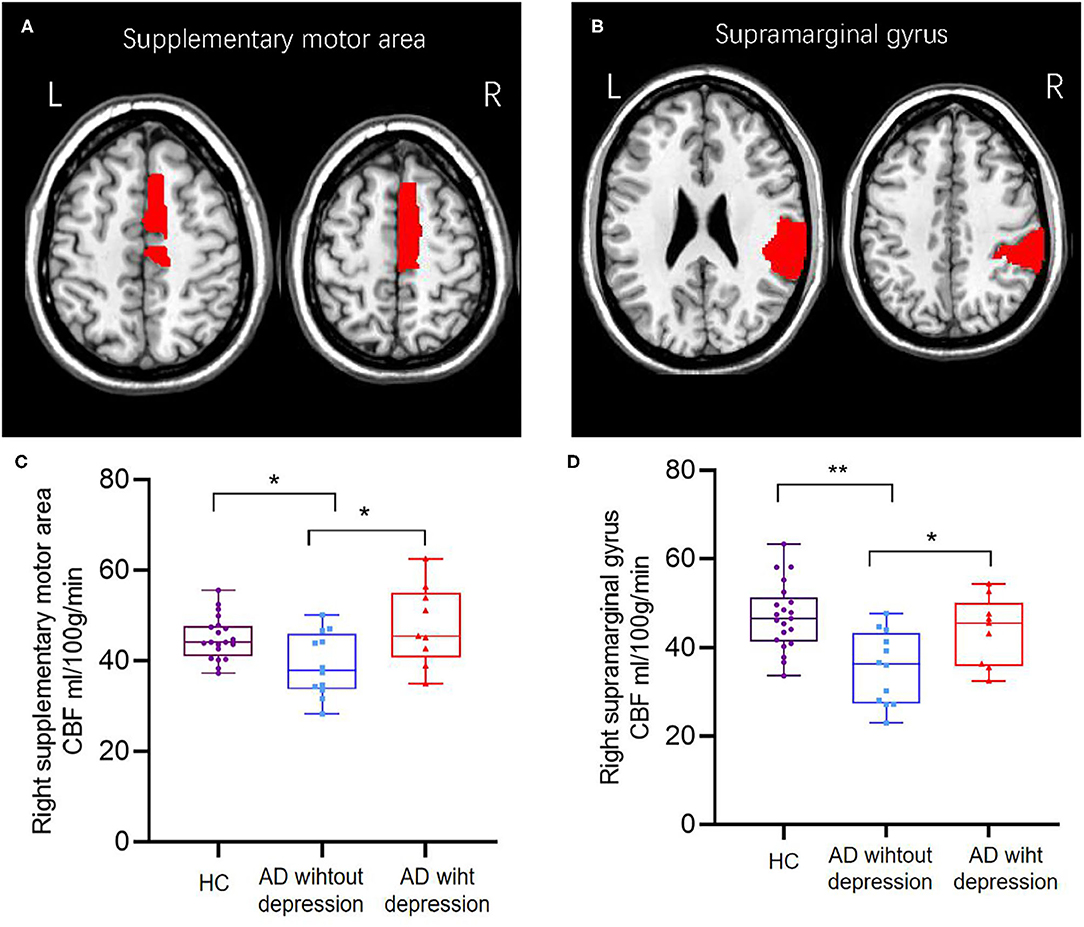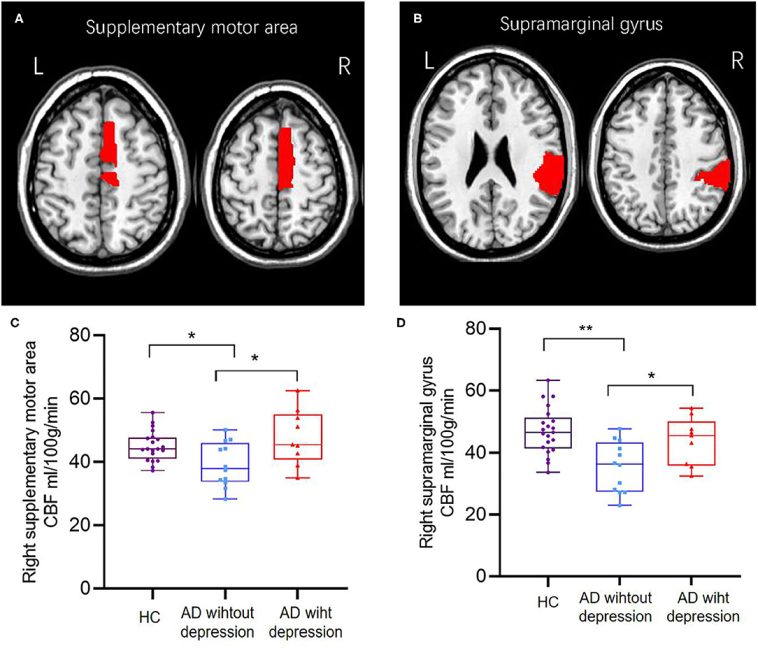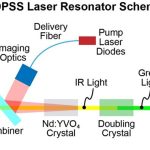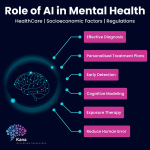
The New Frontier in Alzheimer’s Diagnosis and Treatment
Recent research emerging from the USC Viterbi School of Engineering is challenging old assumptions about Alzheimer’s disease by focusing on the brain’s blood flow dynamics rather than the traditional amyloid-centric approach. This innovative work, which introduces a non-invasive diagnostic test known as the Cerebrovascular Dynamics Index (CDI), invites us to rethink the way we understand, diagnose, and eventually treat Alzheimer’s – a condition affecting over seven million Americans.
Alzheimer’s disease is a condition marked by gradual cognitive decline that often begins impacting lives long before visible symptoms appear. For decades, clinicians and researchers have largely concentrated on the buildup of amyloid beta proteins and tau tangles. However, the latest study presents a compelling case to look deeper into the regulation of blood flow in the brain – a twist that could redefine early diagnosis and treatment strategies.
Rethinking the Traditional Approach to Alzheimer’s
For years, the leading theory in Alzheimer’s research involved the so-called “amyloid cascade hypothesis.” According to this perspective, an overproduction of amyloid beta leads to the formation of tau tangles, ultimately causing neurons to malfunction and die. Although this theory has dominated research, it relies heavily on invasive and costly techniques such as spinal taps and PET scans to detect amyloid and tau proteins, not to mention the cognitive tests like the Mini-Mental State Examination (MMSE) and the Montreal Cognitive Assessment (MoCA) that come with their own set of limitations.
These traditional methods have been burdened with a host of challenges – from being uncomfortable and intimidating for patients to being expensive and not always accurate. Moreover, the cognitive tests, while useful, are subject to various biases and errors inherent to behavioral assessments. With pressing needs for early and accurate diagnosis of Alzheimer’s, it is only natural that experts are on the lookout for methods that address these twisted issues in a more straightforward, non-invasive manner.
Unpacking Cerebral Blood Flow Regulation
Instead of focusing solely on amyloid plaques, the new research takes a closer look at the regulation of cerebral blood flow – the way blood delivery to the brain is managed. Think of your brain’s blood supply as a network of essential pipelines, and consider the innovative approach as a detailed inspection of your home’s plumbing system rather than merely checking for rust on the pipes. This focus on the fine points of cerebral perfusion highlights the importance of proper oxygen and nutrient delivery to the brain, which is fundamental for healthy cognitive functions.
The study examined how natural variations in arterial blood pressure and carbon dioxide (CO₂) levels are quickly balanced by the brain’s vascular system. In a healthy scenario, when cognitive effort increases the production of CO₂, the blood vessels in the brain dilate to bring in more blood and help eliminate the excess CO₂. However, researchers observed that in Alzheimer’s patients, this vital mechanism – called vasomotor reactivity – is impaired. This results in an insufficient supply of oxygen, nutrients, and glucose, all of which are critical for sustaining cognitive function.
Introducing the Cerebrovascular Dynamics Index (CDI)
At the heart of this groundbreaking study is an innovative diagnostic tool – the Cerebrovascular Dynamics Index (CDI). Developed using sophisticated dynamic modeling methods, the CDI non-invasively measures blood flow velocity using Doppler ultrasound and assesses oxygenation in the brain’s front cortex with near-infrared spectroscopy (NIRS). This new “physio-marker” is designed to reliably quantify how swiftly and effectively the brain’s blood supply adjusts to even small changes in pressure and CO₂ levels.
The CDI was tested on 200 participants over a span of five years, yielding results that are both promising and eye-opening. With an Area Under the Curve (AUC) of 0.96, the CDI significantly outperformed traditional methods such as amyloid PET scans and even surpassed well-known cognitive assessments like MoCA and MMSE. For context, an AUC value of 1.0 represents a perfect test, while 0.5 indicates randomness. The remarkable jump from an AUC of 0.78 (for PET imaging) to 0.96 with the CDI marks a substantial improvement in the ability to accurately distinguish individuals with mild cognitive impairment (MCI) or Alzheimer’s from those who are cognitively healthy.
Such a striking improvement not only suggests that we are close to a new era in Alzheimer’s diagnosis but also underscores the potential for the CDI to become a central tool in both early detection and monitoring disease progression.
Exploring Diagnostic Accuracy Through a Comparative Lens
A table comparing different diagnostic methods can be insightful as we try to understand the twisted issues the new method addresses:
| Diagnostic Method | AUC Score | Pros | Cons |
|---|---|---|---|
| CDI Test (Blood Flow Dynamics) | 0.96 |
|
|
| Amyloid PET Scan | 0.78 |
|
|
| MoCA and MMSE Cognitive Tests | ~0.91 – 0.92 |
|
|
This comparative analysis illustrates that the CDI not only addresses the nerve-racking issues associated with current methods but also offers a robust, non-invasive measure that has the potential to revolutionize Alzheimer’s diagnosis. This method could be particularly useful in identifying early dysregulation in the brain’s blood supply that might precede the physical buildup of amyloid and tau.
Cerebral Blood Flow Dynamics: Understanding the Fine Details
The fine details of cerebral blood flow regulation are critical for maintaining healthy cognitive functions and ensuring that the brain receives the necessary oxygen and nutrients. When individuals engage in cognitive tasks, their brain cells produce extra CO₂ as a byproduct of metabolism. To counteract the risk of acidosis – an accumulation of acid in the blood – the brain relies on vasomotor reactivity. This process widens the blood vessels, increases blood flow, and washes out the excess CO₂.
In Alzheimer’s patients, however, this system experiences significant setbacks. The inability to widen the arteries properly leads to reduced blood flow, thereby starving brain tissues of essential resources. These findings shine a light on the often-overlooked twist in the Alzheimer’s narrative: it isn’t only about amyloid or tau, but also about the mismanagement of the brain’s blood supply – a disturbing detail that might be critical for understanding the disease’s progression.
Benefits of Non-Invasive Diagnostic Innovation for Cognitive Disorders
The potential advantages of a non-invasive approach like the CDI are extensive. Its use of Doppler ultrasound and near-infrared spectroscopy means patients don’t have to undergo nerve-wracking or intimidating procedures such as lumbar punctures. This is particularly important when dealing with elderly patients or those who are already experiencing some cognitive decline, as they may be less tolerant of invasive diagnostic measures.
Beyond the convenience and patient comfort, the CDI offers several measurable clinical benefits:
- Enhanced early-detection capability, which is critical given that Alzheimer’s-related brain changes can begin two decades before symptoms appear.
- Cost-effectiveness, potentially reducing the financial burden on healthcare systems and patients alike.
- Objective, quantifiable data that can guide treatment decisions and monitor disease progression.
In an era where personalized medicine is becoming a key focus, an objective and non-invasive test like the CDI aligns perfectly with the broader goals of precision diagnostics. It cuts through the tangled issues associated with traditional methods by leveraging modern technology to capture the hidden complexities of blood flow dynamics.
Integrating Lifestyle Changes to Support Cerebral Health
While innovative diagnostic methods are essential, they also open the door to new treatment and prevention strategies. One of the most exciting aspects of the research lies in its implications for lifestyle interventions aimed at enhancing cerebral blood flow regulation. Experts suggest that routine aerobic exercise—like a 20 to 30 minute daily walk—can be critical in activating mechanisms that restore healthy vascular function.
Furthermore, dietary modifications are a cornerstone of a brain-friendly lifestyle. A balanced diet that includes leafy greens, berries, nuts, whole grains, olive oil, and fish – much like the recently promoted MIND diet – can play a super important role in reducing the risk of cognitive decline. Here are some lifestyle tips cultivated from recent studies:
- Aerobic Exercise: Regular walking, cycling, or swimming to enhance cardiovascular and cerebral blood flow.
- Balanced Diet: Emphasize whole, unprocessed foods while reducing intake of sugars and unhealthy fats.
- Stress Management: Techniques such as meditation, yoga, or even regular social engagement to reduce overall stress levels.
- Consistent Sleep Patterns: Ensuring enough restorative sleep, which is critical for brain health.
Not only do these measures contribute to overall physical health, but they also directly support the regulation of blood flow in the brain. Studies have shown a positive correlation between a healthy lifestyle and improved cognitive performance, suggesting that it is a potential complementary approach for managing Alzheimer’s.
Alternative Therapies: Beyond Plumbed Science
In addition to lifestyle changes, researchers are also exploring alternative interventions that directly aim to optimize cerebral blood flow regulation. Two promising approaches are controlled intermittent hypoxia/hypercapnia and transcutaneous auricular vagal neurostimulation (taVNS). While these methods may sound like science fiction, preliminary data indicate that they can indeed help restore more robust blood flow in the brain.
Intermittent Hypoxia/Hypercapnia:
This method involves controlled inhalation of air with slightly lower oxygen and higher CO₂ levels, somewhat similar to training techniques used by athletes. The idea is that these controlled sessions can trigger the brain’s natural mechanisms to improve blood vessel responsiveness. Though still in its early stages of assessment, this approach offers hope that even the small twists in cerebral dynamics can be corrected with the right stimulus.
Transcutaneous Auricular Vagal Neurostimulation (taVNS):
taVNS employs a non-invasive earpiece to stimulate the vagus nerve, a central nerve involved in regulating many bodily functions, including blood flow. Early results suggest that this method may positively affect the brain’s ability to manage its blood supply. While long-term studies are needed to confirm its efficacy, the initial data are promising enough to warrant further exploration.
Both approaches reflect a broader movement toward harnessing the body’s natural regulatory processes rather than solely relying on pharmacological interventions. They capture how a better understanding of our physiological mechanisms can lead to more natural, less invasive interventions for managing tough illnesses like Alzheimer’s.
Clinical and Therapeutic Implications of Blood Flow Research
The potential impact of these findings extends well beyond the realm of Alzheimer’s diagnosis. By shining a light on how cerebral blood flow regulation is intricately linked with cognitive health, this research paves the way for rethinking treatment approaches for various forms of dementia. For example:
- Multifaceted Treatment Regimens: Combining non-invasive diagnostics with lifestyle modifications and alternative interventions could lead to personalized treatment plans.
- Early Intervention Strategies: With easy-to-administer tests, physicians can identify issues in blood flow regulation early on, allowing for more timely and tailored interventions.
- Broad-Spectrum Benefits: Interventions aimed at improving brain perfusion may benefit not only Alzheimer’s patients but also those with other cognitive impairments.
It is becoming increasingly clear that a multi-pronged approach that addresses both the underlying physiological issues and the behavioral factors is necessary to manage and treat neurodegenerative diseases effectively. For many in the medical community, this represents a much-needed shift in perspective – from relying solely on expensive, invasive tests to embracing innovative technologies that capture the subtle parts of our bodily processes.
Managing Expectations: Looking Carefully at the Evidence
While the results of the CDI study are promising, it is important for both clinicians and the general public to manage their expectations. Scientific research is often loaded with challenges and unexpected twists and turns, and this isn’t any different. Although the CDI has demonstrated a high level of accuracy in preliminary trials, further large-scale studies and long-term data are needed to validate its widespread clinical use.
As experts continue to get into the fine shades of regulating cerebral blood flow, there is a consensus that the CDI should be viewed as a significant step forward rather than an instantaneous cure-all. The research community will need to work diligently to replicate these findings in larger, more diverse populations. Only through careful, incremental progress can we be sure that these innovative approaches will hold up when applied to broader clinical settings.
Weighing the Pros and Cons of the New Approach
It helps to list out the benefits and potential limitations when discussing any new medical approach. Below is a bulleted summary that lays out both the advantages and the current limitations of focusing on cerebral blood flow dynamics in Alzheimer’s diagnosis:
-
Advantages:
- Non-invasive and patient-friendly
- High diagnostic accuracy that beats current traditional methods
- Potential for early detection well before severe symptoms manifest
- Foundational basis for developing targeted treatment and prevention strategies
-
Limitations and Considerations:
- Requires specialized equipment and trained specialists
- Needs validation through extended research on a broader demographic
- Integration into existing clinical practice may be challenging in the early stages
- Long-term outcomes and treatment efficacy still need rigorous testing
This balanced view underscores that while the path ahead is promising, it is also on edge and loaded with challenges that researchers must manage through careful scrutiny and further studies.
Charting the Path Forward: Combining Technology, Lifestyle, and Therapeutics
The implications of USC’s research stretch far beyond a single study. As the medical community takes a closer look at the biological regulation of brain blood flow, a picture begins to emerge that intertwines non-invasive diagnostic technology, lifestyle interventions, and emerging therapies. This multi-dimensional approach is set to revolutionize how we figure a path through not only Alzheimer’s but also other age-related cognitive disorders.
Here are some concrete steps and considerations for the future:
- Wider Clinical Trials: Implementing broader trials will help verify the CDI’s diagnostic performance across different populations, ensuring the method works reliably for diverse patient groups.
- Integration with Existing Protocols: Developing protocols that incorporate both non-invasive tests and traditional cognitive assessments will provide clinicians with a more comprehensive picture of a patient’s cognitive health.
- Promotion of Preventative Health: Healthcare providers could emphasize lifestyle changes, such as regular exercise and a brain-friendly diet, as part of routine care for individuals at higher risk for cognitive decline.
- Research on Combined Therapies: Investigating how methods like taVNS or controlled intermittent hypoxia/hypercapnia could synergize with current treatments to further improve outcomes.
By taking these steps, the healthcare industry can hope to not only increase the accuracy of Alzheimer’s diagnosis but also refine treatment strategies to address the pointed issues of cerebral perfusion regulation. Such a comprehensive approach holds the promise of not just managing symptoms but also slowing, or perhaps even preventing, the progression of cognitive decline.
Patient-Centered Benefits: A New Era in Medical Diagnostics
For patients and their families, these advances offer a ray of hope in a field that has been filled with intimidating complexities. The move toward non-invasive, accurate testing means less stress, fewer nerve-wracking procedures, and a more proactive approach to tackling Alzheimer’s. Families who once had to face the overwhelming reality of expensive and invasive tests might soon find relief in more accessible and reliable options.
The shift in diagnostic methods reflects a patient-centered philosophy that values comfort, efficiency, and precision. It is a testament to how modern medicine and cutting-edge technology can converge to address some of the most confusing bits of neurodegenerative disease diagnosis.
Future Directions: Research, Technology, and Global Impact
Looking ahead, the ripple effects of this research are poised to reverberate throughout the medical field, influencing not only neurology but also other disciplines such as alternative medicine and nutritional science. As researchers continue to get into the fine details of cerebral blood flow dynamics, the integration of these insights with emerging therapies will likely lead to groundbreaking developments.
On a global scale, once the CDI and similar methodologies are validated and standardized, we could see a significant shift in how cognitive health is prioritized. Countries with aging populations might adopt these non-invasive tests into their routine health screenings, potentially reducing the burden on healthcare systems by facilitating early interventions. The impact could be profound, not just in terms of improved patient outcomes, but also in reducing the overall cost associated with late-stage Alzheimer’s care.
Bridging Modern Medicine with Alternative Health Approaches
The evolving understanding of cerebral blood flow regulation also opens the door for bridging modern scientific methods with alternative medical practices. Many complementary therapies focus on improving blood circulation and overall vascular health – interventions that might now receive renewed attention in the clinical context of dementia prevention and treatment.
For instance, integrative approaches that combine nutritional guidance, herbal supplements, and stress reduction techniques with modern diagnostic tools create a holistic paradigm for cognitive health. This synthesis of methods can help address the small distinctions and the subtle parts that traditional methods might overlook. It’s not about replacing one approach with another but finding a balanced integration that maximizes patient well-being.
Conclusion: A Promising Shift Toward Non-Invasive, Accurate Diagnostics
In conclusion, the USC Viterbi School of Engineering’s novel focus on cerebral blood flow dynamics represents a pivotal turn in Alzheimer’s research and clinical practice. The introduction of the Cerebrovascular Dynamics Index offers a promising alternative whereby non-invasive, accurate measurements can replace more complicated, invasive, and costly traditional techniques. This groundbreaking research suggests that the proper regulation of blood flow – ensuring that oxygen and nutrients reach the brain promptly – could be the key to preventing or mitigating cognitive decline.
The implications span multiple domains, affecting everything from patient care and lifestyle modifications to future research agendas and global healthcare policies. While challenges remain, especially in validating the technique across broad populations and integrating it with existing practices, the exciting potential of the CDI is undeniable.
As the field continues to figure a path through the labyrinth of dementia diagnostics and treatment, one thing remains clear: an interdisciplinary approach that combines the strengths of modern technology, lifestyle interventions, and alternative medicine may be our best chance at battling Alzheimer’s. By shifting our focus from the traditional and sometimes off-putting diagnostic methods to a more dynamic and patient-friendly approach, we open the door to earlier intervention, better treatment outcomes, and ultimately, an improved quality of life for millions.
It is a time of cautious optimism—a reminder that even the most tangled issues in medicine can be addressed with innovative thinking and a willingness to explore the hidden complexities of our bodies. The next steps will be to continue in-depth studies, refine these diagnostic tools, and ensure that this promising technology serves as the cornerstone of a new era in Alzheimer’s management.
For families, caregivers, and patients facing the overwhelming challenges of cognitive decline, these advances provide not just a scientific breakthrough, but a beacon of hope that the key to managing Alzheimer’s may lie within the very blood that flows through our brains.
In the end, the success of these non-invasive diagnostic methods may well mark the beginning of a paradigm shift in how we approach cognitive health—a shift that emphasizes early detection, personalized care, and a holistic integration of modern and alternative medical practices.
Originally Post From https://www.eurekalert.org/news-releases/1095857
Read more about this topic at
Revolutionizing Alzheimer’s Diagnosis and Management
Blood biomarkers promise to revolutionize Alzheimer’s …


